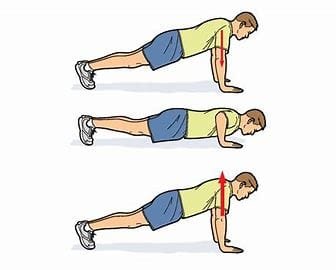Push-ups are the most familiar and effective exercises to bring improvement in the muscular endurance level of the upper body along with general fitness. It also happens to be a compound exercise as it engages multiple muscle groups at a single time. Push-ups are an excellent exercise that can be performed anywhere without requiring special equipment or even the need to be in a gym physically. In this paper, we will discuss a number of key elements associated with push-ups, ranging from the benefits, correct posture, varying techniques, and tips to include them in your fitness regimen.

Benefits of Push-Ups
Strength Building: Push-ups mainly focus on developing strength in the chest, shoulders, triceps, and core muscles. Therefore, with frequent performance, one would build up his or her muscles for strength and endurance, hence improving his performance in other exercises and activities of daily living.
Core Stability: While push-ups seem to be an exercise that works the upper body, they also activate the core. An improved stability and posture, which are so imperative for holistic mechanics and prevention against injury, result from this activation of the core.
Functional Fitness: Push-ups mimic daily activities, such as pushing objects or stabilizing the torso while standing. This makes it qualify for a program that looks for functional fitness, enhancing general physical performance.
Cardiovascular Benefits: If done at a rate, pushups may be able to raise the heart rate. Therefore, if done in circuitry, there will be cardiovascular benefits. So, this can really be utilized by those wishing to improve their cardiovascular health and endurance.
Accessibility and Convenience: You can do push-ups literally anywhere—from your living room to the park. Push-ups are a great exercise because no equipment is required, so it is convenient for those with busy schedules or limited access to a gym.
Proper Form of Push-Ups
To get the most out of doing push-ups and to reduce the risk of injury, it is important that you do them with proper form. Here’s a step-by-step guide:
Starting Position: Place your hands slightly wider than shoulder width. Feet together, the body forms a straight line from head to heels.
Engage Your Core: Contraction of the core muscles stabilizes the movement. Hips must not sag or come too far up.
Trunk Elevation Phase: Breathe in as you bend your elbows to flex your torso down. Your elbows should be approximately 45 degrees with your torso. Lower your chest in such a way that it clears the ground about an inch.
Pushing Phase: Breathe out as you push up through your palms in order to raise your body up to the starting position. Throughout the movement, keep your body in a straight line.
Repetitions and sets: Begin with an achievable number of repetitions, for example, 5-10 push-ups, and build up from there as you get stronger. For optimal results, aim to do 2-3 sets with at least 30-60 seconds between sets.
Push-Up Variations

One way to not get bored with the same old thing while also working other parts of your muscles is by mixing things up with some variations of push-ups:
Knee Push-Ups: These are variations in push-ups so that beginners can also do them to increase their strength. The position of the knees on the floor and the engagement of the core make it easier for them to do push-ups.
Incline Push-Ups: This will be an adaptation of doing push-ups with hands placed on an elevated platform like a bench or a stable and strong table so that this weight is not overpowering the upper body, hence convenient for beginners.
Decline push-ups: Place feet on a bench or step. Hands should be flat to the floor. Difficulty will increase, and major stress will be applied to the upper chest and shoulders.
Diamond push-ups: Hands are placed very close to one another, so that the thumbs and the index fingers form a diamond shape. This variation stresses the triceps and inner chest muscles.
Plyometric Push-Ups: Take it to the next level by pushing off the ground so that you can lift your hands off of the floor when you push back up. This advanced variation takes power and cardio to a whole new level.
Spiderman Push-Ups: When you lower down, bring one knee toward the elbow of the same side. This puts extra pressure on the core muscles and is ten times harder than a regular push-up.
Tips for Incorporating Push-Ups into Your Routine
Warm-Up: Warm up always to get your muscles and joints ready for exercising. Dynamic stretches and low-intensity cardio are helpful.
Progress Gradually: If you are not used to doing push-ups, then start with easier variations and gradually progress to more challenging variants as your strength builds.
Know Your Pain: If you are having pain or discomfort, reassess your form or adjust the exercise. This is because you do not want to push through the pain and end up injuring.
Variety Is the Spice: Add push-ups to your routine but vary it by adding other exercises to the program. Mix strength training with aerobic activities.
Track your performance: Try to keep track of how many push-ups you can do and see how your strength and endurance increase over time. Goals also keep you intrigued and motivated.
Maintain consistency: Consistency is the secret to seeing any result. So, include pushups in your routine at least 2-3 times a week.
Conclusion

Push-ups are likely one of the most versatile and effective exercises and can really change your workout level. Considering their many benefits, from strength building to core stabilization and cardiovascular improvements, they occupy many fitness programs. Practicing proper form and discovering variations will assure achievement while keeping a stronger and healthier body with the continued practice of push-ups.



